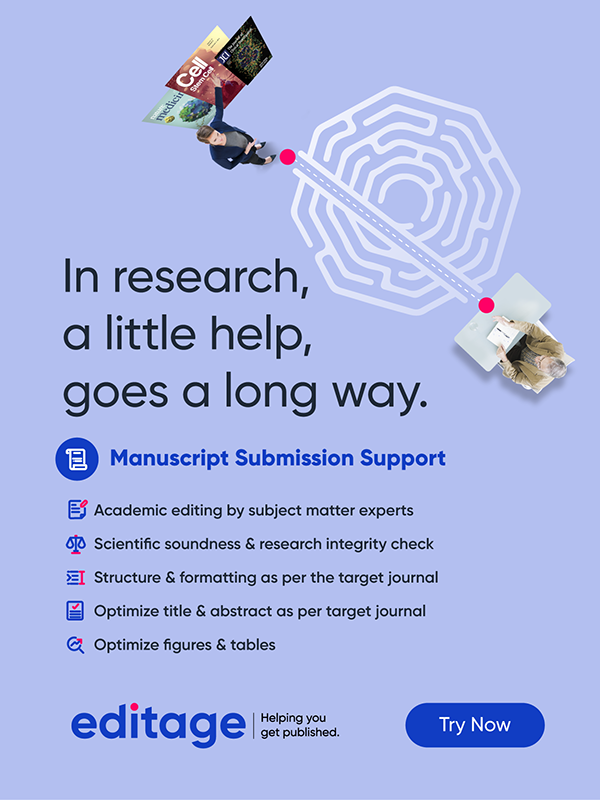
|
Getting your Trinity Audio player ready...
|
Research paper formats vary depending on the style guide you follow when preparing your manuscript. Typically, these guides provide instructions for formatting citations, references, fonts, page layout, and section headings. With multiple resources available online, browsing through various style guides may become cumbersome. To simplify this process, we have curated the formatting guidelines recommended by three common formatting styles—American Psychological Association (APA), Modern Language Association (MLA), and Chicago Manual of Style (CMOS)—to help you format your research paper.
Components of a Research Paper
Before you begin formatting, it is important to understand the key components of a research paper and their purposes. Ideally, your research paper should contain the following elements:
- Title/Cover page: The title page or the cover page contains the manuscript title along with the authors’ details, such as names, affiliations, corresponding author information, and any other requirements specified by the target journal.
- Abstract: The abstract is a crucial element that piques the reader’s interest to dive further into your research. It may be structured or unstructured, capturing the research objectives, methods, key findings, and conclusions of your study. You may refer to your target journals’ guidelines to know the recommended word count limit (typically ranges from 150 to 250 words).
- Introduction: This section introduces the research topic, provides relevant background information, presents the research questions, and highlights the significance or novelty of your study. The introduction should be concise, offering enough context for the reader to understand the study’s purpose.
- Methods: This section describes the research methodology, which includes the materials used for the analysis, study design, data collection techniques, and, if appliable, statistical analyses and details of study subjects or participants. This section is generally divided into relevant sub-sections for clarity.
- Results: Here,you need to present the study findings in an organized manner. You may include tables, graphs, figures, and other suitable illustrations.
- Discussion: This section interprets the obtained results and discusses their implications. The study findings can be compared with existing literature, and any limitations or drawbacks observed in your analysis can be acknowledged while highlighting future research directions.
- Conclusion: The final section of your manuscript restates the study objective, summarizes the key findings, highlights their broader implications, presents the overall conclusions, and underscores the future scope of your research.
- References: All the sources cited in your manuscript are listed here. Depending on the selected citation style, reference may be arranged alphabetically by the author’s last name (Harvard referencing) or in the order of citation appearance (Vancouver referencing).
Importance of Proper Formatting in Research Papers
Why do research paper formats matter? Imagine reading a document with an inconsistent layout and structure—it would be distracting and difficult to navigate. A well-formatted manuscript creates a strong first impression on editors, reviewers, and readers.
Apart from first impressions, here are other key reasons to maintain proper research paper formatting:
- Compliance with target journal guidelines: Adhering to formatting requirements increases the likelihood of manuscript acceptance and publication.
- Efficient peer review: A well-structured manuscript allows reviewers to focus on the content rather than being distracted by layout issues.
- Enhanced clarity and organization: A clear format makes it easier for the readers to navigate the content of your manuscript.
- Credibility and professionalism: A carefully formatted manuscript reflects attention to detail and reinforces the trustworthiness of your research.
Common Formatting Styles – APA, MLA, and Chicago
There are several standardized styles used for research paper formatting in different fields.
- MLA is predominantly used in humanities, including literature, language, history, and philosophy.
- APA is frequently utilized in various science fields, such as physical sciences and social sciences.
- The Chicago style is preferred by book publishers and is often used in the fields of business and fine arts, among others.
Each of these formatting styles offers guidelines suitable for researchers submitting manuscripts for publication. While some aspects are common, variations exist in heading styles, citation and reference formats, placement of page numbers, and the use of a title page.
Here’s a table summarizing the key formatting requirements of each of these styles.
| MLA Formatting | APA Formatting | Chicago Formatting | |
| Common formatting requirements | 1. Use an easy-to-read standard font (e.g., 12 pt Times New Roman) 2. Maintain 1-inch margin on all sides of the pages 3. Follow double-line spacing for the text throughout the document 4. Indent new paragraphs by ½ inch 5. Use title case capitalization for headings and sub-headings | ||
| Title page | Optional | Required (should include article title, author names, affiliations, and any other information if applicable) | Optional |
| Page numbers | Top right corner | Top right corner | Top right corner or bottom center |
| Headings | Not mandatory but recommended for easy organization of paper. Maintain consistency across different heading levels: Heading Level One Heading Level Two Heading Level Three | Required Heading Level One Heading Level Two Heading Level Three Heading Level Four. Heading Level Five. | Similar to MLA heading format: Heading Level One Heading Level Two Heading Level Three |
| In-text citations | Parenthetical or narrative (author’s name and page number) | Parenthetical or narrative (author’s name and publication year) | 1. Author-date format (author’s name, publication year, and page number) 2. Notes-bibliography (superscript numerals) |
| References | Works cited page | References page | 1. Reference list 2. Bibliography (footnotes and endnotes) |
Formatting an MLA Research Paper
Basic Formatting Requirements
The basic guidelines for the research paper format in the MLA style are as follows:
- Use an easy-to-read font, such as 12 pt Times New Roman
- Maintain 1-inch margin on all sides of the page
- Follow double-line spacing throughout the document
- Indent new paragraphs by ½ inch
- Use title case for headings, wherein the first letters of all words are capitalized except for certain small words (e.g., short prepositions and articles)
References
- The MLA style recommends parenthetical or narrative citations to cite your references, with the citation including the author’s last name and page number.
- The Works Cited page should list all sources mentioned in the main body of the paper. Each entry is formatted with a hanging indent, and typically includes the author’s name, title of the work, date, and other publication information.
Formatting an APA Research Paper
Basic Formatting Requirements
The fundamental guidelines for formatting research papers in APA style are similar to those of the MLA style.
- Use a common font, such as 12 pt Times New Roman or 11 pt Calibri
- Maintain 1-inch margin on all pages
- Double-line spacing should be followed throughout the document
- Indent new paragraphs by ½ inch
- Use title case for headings
References
- The in-text citations in APA style can be of two types, with the author’s name and publication year mentioned:
- Parenthetical [e.g., “The findings aligned with those reported in a previous study (Bottas, 2020).”]
- Narrative [e.g., “Bottas (2020) investigated the impact of excessive screen-time exposure on the social behavior of adolescents.”]
- The references should be listed on a separate page at the end of the manuscript. The heading “References” must be centered at the top of the page, and the works must be listed in alphabetical order with a hanging indent.
Chicago Formatting
The formatting guidelines of the Chicago style, also referred to as the Turabian style, can be summarized as follows:
- Use a standard font for writing the manuscript
- Follow 1-inch margin and double-line spacing throughout the document
- Indent new paragraphs by ½ inch
- Use title case for headings
- Chicago style provides guidelines for two types of citation styles:
- Author-date format (include author’s name, publication year, and page number)
- Notes-bibliography (indicate citations using superscript numerals)
- Reference formats in the Chicago style differ depending on the citation style:
- Reference list (for author-date citations)
- Bibliography (footnotes and endnotes)
General Guidelines for Formatting Research Papers
While specific style guides are available, the following guidelines apply to all research paper formats:
- Initial draft preparation: When writing your first draft, avoid focusing too much on the formatting requirements, as this may hinder the flow of ideas. Instead, organize content into rough sections and add specific section headings and sub-headings later.
- Citation tools: Regardless of the style guide followed, citations and references must be meticulously formatted. Use suitable citation tools and reference managers to simplify the process.
- Plagiarism check: You may unintentionally end up with plagiarized text in your manuscript. So, ensure that the content of your manuscript is screened for plagiarism using plagiarism detection tools.
- Final proofread: Before submission, proofread your entire manuscript for consistency, spelling and grammatical errors, punctuation mistakes, and logical flow of text.
Conclusion
A well-formatted research paper helps communicate your study findings effectively. With these standard guidelines, your research paper formatting can be a smooth process. You may also consider using professional manuscript formatting services to provide your research paper the edge it needs to stand out.








